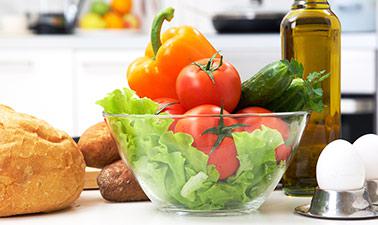- Level Foundation
- Ratings
- Duration 16 hours
- Course by Wageningen University & Research
- Total students 12,792 enrolled
-
Offered by

About
Everyday reports of food scandals and recalls are published. One day it's scary bacteria in meat, and another day it's dangerous pesticides in fruits. According to some, meat needs to be cooked well to prevent food-borne illness while others warn not to heat food to prevent the formation of poisonous substances.
Many consumers worry about the conflicting and confusing messages about food hazards.
This nutrition and health course will teach you about the risk factors associated with food and give you the tools to assess and quantify the dangers they can present. You will learn about food safety, the effects of food processing, the shared responsibility in the food chain and the prevention of food poisoning. After this course, you will be able to differentiate what is a food myth and what is an actual health risk. Finally, you will gain a contemporary view of how different risks can be weighed in a scientific way.
What you will learn
- Overview of food hazards
- Elementary knowledge on microbiological and toxicological risk analysis
- How to better interpret the information overload about hazards in food
- Why zero hazard does not exist
- Ways to reduce hazards in food
Skills you learn
Syllabus
Module1: Hazards and risks in the modern food chain
Introduction to the difference between a hazard and a risk, the different types of hazards present in food and the perception of risk by public.
Module 2: Interpretation of risks, probability and relevance
Introduction to risk reporting, how ways of presenting information can mislead consumers and difference between significance and relevance.
Module 3: Microorganisms in food: good, bad and/or a nuisance
Introduction to ubiquitous, good/bad or spoiling microorganisms.
Module 4: Qualitative and quantitative principles food safety of chemicals
Classification of risks as avoidable or unavoidable, difference between genotoxic and non-genotoxic compounds and examples of important genotoxic carcinogens present in the food chain as well as introduction to dose-response concept.
Module 5: Toxicological risk assessment
Introduction to risk assessment framework, different ways of performing risk assessments depending on the nature of the chemical (i.e. genotoxic vs. non genotoxic) and hands on risk assessment of the food additive cyclamate and the carcinogen acrylamide.
Module 6: Microbiological risk assessment
Introduction to contamination routes, dose-response relationship and effect of temperature on microorganisms' growth as well as sampling and legal requirements.
Module 7: Ways to reduce risks in food
Introduction to prevention of avoidable hazard, effect of heat on hazards and inactivation as well as prevention techniques to reduce risks in food.
Module 8: Final assignment/exam
Wrap-up.
Auto Summary
Explore "Nutrition and Health: Food Safety," a foundational course in Health & Fitness offered by edX. Over 16 weeks, you'll delve into food safety, risk factors, and the impact of food processing. Learn to distinguish food myths from actual health risks and assess dangers scientifically. Ideal for those seeking professional development in nutrition and health.

Ivonne M.C.M. Rietjens

Marcel H. Zwietering

Martine Reij

Jochem Louisse

Jonathan Nicolas


